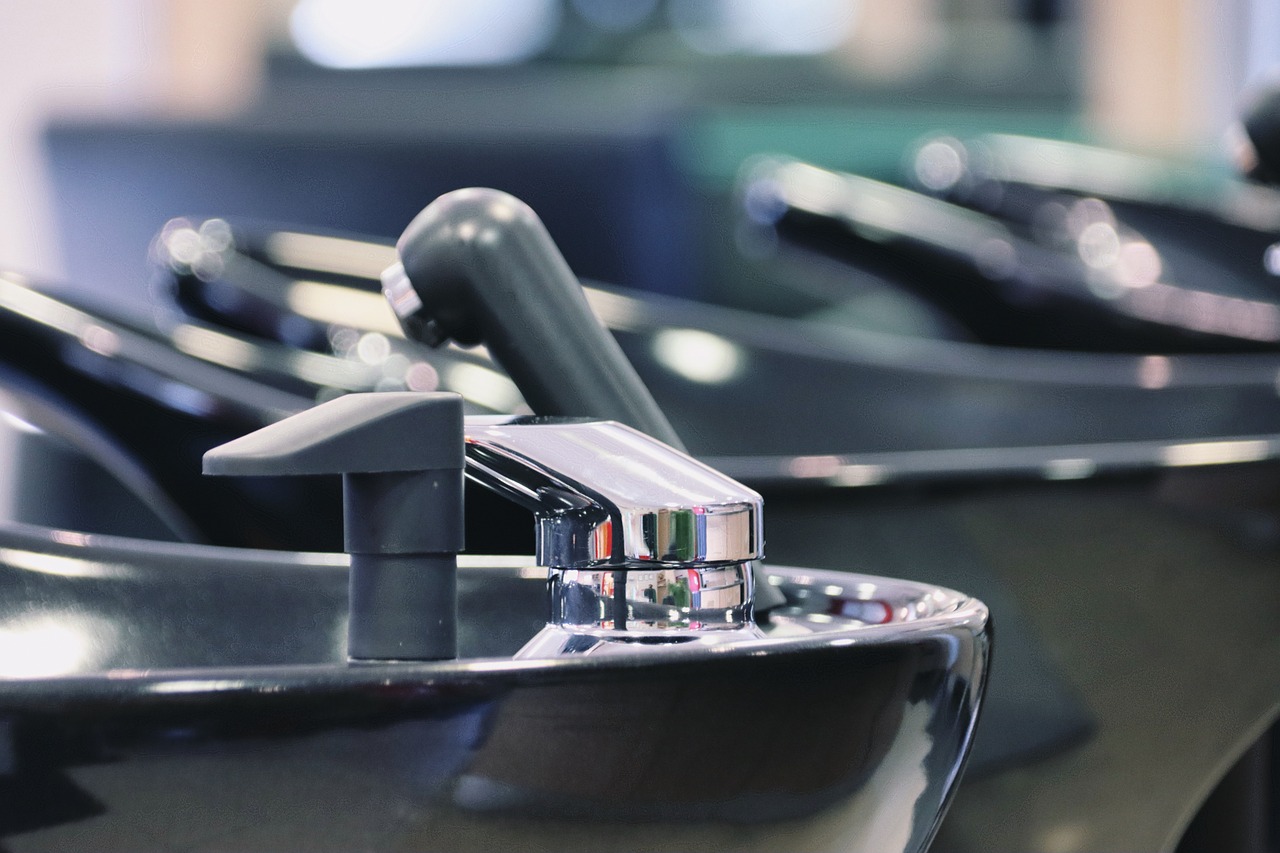This article delves into the importance of accreditation for hair transplant clinics, emphasizing its role in ensuring patient safety, enhancing the quality of care, and improving overall outcomes in hair restoration procedures. Accreditation serves as a benchmark, allowing patients to make informed decisions about their treatment options.
The Importance of Accreditation in Hair Transplant Clinics
Accreditation is essential as it guarantees that clinics adhere to established standards, thereby boosting patient confidence in the safety and quality of their hair transplant procedures. When a clinic is accredited, it signifies that it has undergone rigorous evaluations and meets the necessary regulations set forth by authoritative bodies.
Understanding Hair Transplant Procedures
To appreciate the significance of accreditation, it is crucial to understand the hair transplant process. Two primary techniques are commonly used: Follicular Unit Extraction (FUE) and Follicular Unit Transplantation (FUT).
- Follicular Unit Extraction (FUE): This minimally invasive technique involves extracting individual hair follicles and transplanting them, resulting in natural-looking outcomes with fewer scars.
- Follicular Unit Transplantation (FUT): This method entails removing a strip of scalp to harvest hair follicles, which can be advantageous for larger grafts but may leave more noticeable scarring.
Why Choose an Accredited Clinic?
Opting for an accredited clinic ensures adherence to strict safety and ethical standards, which are vital for achieving optimal patient outcomes and satisfaction. Accredited clinics follow rigorous protocols, minimizing risks and complications during the hair transplant process.
How to Verify Clinic Accreditation
Patients should learn how to verify a clinic’s accreditation status, typically through official health organizations or regulatory bodies. Checking with professional organizations can provide reliable information on accredited clinics.
Conclusion: The Role of Accreditation in Your Hair Restoration Journey
In summary, selecting an accredited hair transplant clinic is crucial for ensuring safety, quality, and favorable outcomes. This decision is paramount for anyone considering hair restoration, as it directly impacts the overall experience and success of the procedure.

The Importance of Accreditation in Hair Transplant Clinics
Accreditation plays a crucial role in the realm of hair transplant clinics, ensuring that they meet stringent standards of quality and safety. This process not only enhances the credibility of the clinic but also instills confidence in patients seeking hair restoration procedures. By choosing an accredited clinic, patients can rest assured that they are receiving care from facilities that adhere to high industry standards.
Accredited clinics are subject to regular evaluations, which assess their compliance with established protocols. These evaluations cover various aspects, including the qualifications of the medical staff, the safety measures in place, and the overall patient care environment. Such rigorous assessments help to minimize risks associated with hair transplant surgeries, thereby enhancing patient safety.
Moreover, accreditation often indicates that a clinic has access to the latest technologies and techniques in hair restoration. For instance, clinics that are accredited may be more likely to employ advanced methods such as Follicular Unit Extraction (FUE) and Follicular Unit Transplantation (FUT). These techniques are known for providing natural-looking results while minimizing complications.
Patients can also expect a higher standard of care in accredited clinics. This includes not only experienced surgeons but also well-trained support staff who understand the nuances of hair restoration procedures. The comprehensive training and ongoing education required for accreditation help ensure that all personnel are equipped to handle the needs of patients effectively.
In summary, the importance of accreditation in hair transplant clinics cannot be overstated. It serves as a vital indicator of quality and safety, helping patients make informed decisions about their hair restoration options. By choosing an accredited clinic, patients are more likely to achieve successful outcomes, reinforcing the value of this essential process in the healthcare landscape.

Understanding Hair Transplant Procedures
is essential for anyone considering hair restoration. This section aims to provide a comprehensive overview of the hair transplant process, including the popular techniques known as Follicular Unit Extraction (FUE) and Follicular Unit Transplantation (FUT). By understanding these methods, patients can better prepare for their treatment journey and set realistic expectations.
The hair transplant process generally begins with a thorough consultation, where a qualified specialist assesses the patient’s hair loss pattern, scalp condition, and overall health. This initial evaluation is crucial in determining the most suitable technique for each individual.
| Technique | Description | Pros | Cons |
|---|---|---|---|
| Follicular Unit Extraction (FUE) | Involves extracting individual hair follicles from the donor area. |
|
|
| Follicular Unit Transplantation (FUT) | Involves removing a strip of scalp to harvest hair follicles. |
|
|
During the procedure, local anesthesia is administered to ensure the patient’s comfort. The surgeon then carefully extracts hair follicles using the selected method. After extraction, the follicles are meticulously implanted into the thinning or balding areas of the scalp.
Post-procedure, patients can expect some swelling and discomfort, which typically subsides within a few days. Following the surgeon’s aftercare instructions is vital for optimal healing and results.
In conclusion, understanding the hair transplant procedures, specifically FUE and FUT, equips patients with the knowledge to make informed decisions regarding their hair restoration journey. Each technique has its advantages and disadvantages, and the choice ultimately depends on individual needs and goals.
Follicular Unit Extraction (FUE)
is a cutting-edge, minimally invasive hair restoration technique that has revolutionized the way hair transplants are performed. Unlike traditional methods, FUE focuses on the extraction and transplantation of individual hair follicles, ensuring a more natural appearance and significantly reducing scarring.
During the FUE procedure, a skilled surgeon uses a specialized tool to remove hair follicles directly from the donor area, which is typically located at the back of the head. This method contrasts sharply with the older Follicular Unit Transplantation (FUT) technique, where a strip of scalp is excised, often leaving a more prominent scar. With FUE, patients can enjoy a more discreet recovery, as the tiny extraction sites heal quickly and are less noticeable.
| FUE Advantages | FUE Limitations |
|---|---|
|
|
The benefits of FUE extend beyond aesthetic results. Patients often experience a quicker return to normal activities, allowing them to resume their daily routines with minimal interruption. Furthermore, the ability to extract hair from different parts of the body opens up new possibilities for individuals with limited scalp donor hair.
However, it is essential to note that FUE may not be the ideal choice for everyone. Factors such as hair density and the overall condition of the scalp can influence the success of the procedure. Therefore, a thorough consultation with a qualified specialist is crucial to determine the best approach for each individual.
In conclusion, represents a significant advancement in hair restoration techniques, offering patients a less invasive option with natural-looking results. By understanding both the advantages and limitations of FUE, individuals can make informed decisions about their hair restoration journey.
Benefits of FUE
Benefits of Follicular Unit Extraction (FUE)
Follicular Unit Extraction (FUE) is a modern hair restoration technique that offers numerous advantages over traditional methods. Understanding these benefits can help patients make informed decisions about their hair transplant options.
- Reduced Recovery Time: One of the most significant advantages of FUE is the shorter recovery period. Patients typically experience less trauma to the scalp, allowing them to return to their daily activities much sooner compared to other methods.
- Minimal Scarring: FUE is known for its minimal scarring. Since the procedure involves extracting individual hair follicles, the resulting scars are tiny and often undetectable, providing a more aesthetically pleasing outcome.
- Versatile Donor Site Options: FUE allows for the harvesting of hair follicles from various parts of the body, including the beard and chest. This enhances donor site options for patients who may have insufficient scalp hair, making it a viable solution for a broader range of individuals.
- Natural-Looking Results: The technique promotes a more natural appearance as it allows for precise placement of hair follicles, mimicking the natural growth pattern of hair.
- Less Pain and Discomfort: Many patients report experiencing less pain during and after the procedure, contributing to an overall more comfortable experience.
In summary, the benefits of FUE make it a popular choice among those seeking hair restoration. With its short recovery times, minimal scarring, and natural-looking results, FUE stands out as a leading option in the field of hair transplants.
Limitations of FUE
Limitations of Follicular Unit Extraction (FUE)
While Follicular Unit Extraction (FUE) is widely regarded as a leading hair restoration technique, it is important to recognize that it may not be the ideal choice for every individual. Various factors can influence the effectiveness of the procedure and the overall satisfaction of the patient. Here are some key limitations to consider:
- Hair Density: One of the primary considerations is the patient’s hair density. If a person has low hair density, the results of FUE may not be as satisfying, as the transplanted hair might not blend seamlessly with existing hair.
- Scalp Condition: The condition of the scalp plays a crucial role in the success of FUE. Issues such as scarring, infections, or skin disorders can hinder the procedure and affect healing.
- Donor Site Limitations: FUE relies on harvesting hair follicles from donor areas, usually the back of the head. If these areas are not dense enough or have been previously treated, it can limit the number of follicles available for transplantation.
- Cost Considerations: FUE tends to be more expensive than traditional methods like Follicular Unit Transplantation (FUT) due to the time-intensive nature of the procedure. This can make it less accessible for some patients.
- Time-Consuming Process: The extraction of individual follicles can be a time-consuming process, which may require multiple sessions for patients needing extensive coverage.
- Results May Vary: Individual results can vary significantly based on personal factors such as genetics, age, and overall health, which can lead to unpredictable outcomes.
In conclusion, while FUE offers many advantages, it is essential for prospective patients to consult with a qualified professional to evaluate their unique situation. Understanding these limitations will help individuals make informed decisions regarding their hair restoration options.
Follicular Unit Transplantation (FUT)
is a well-established hair restoration technique that has gained popularity among individuals seeking to restore their hairline. This method involves the surgical removal of a strip of scalp from the donor area, typically located at the back of the head. The extracted strip is then dissected into individual hair follicles, which are subsequently transplanted into the balding or thinning areas of the scalp.
One of the primary advantages of FUT is its ability to provide a larger number of grafts in a single session, making it an ideal choice for patients who require extensive coverage. This technique is particularly beneficial for those with significant hair loss or those looking to achieve a fuller look. However, it is important to note that while FUT can yield impressive results, it may also come with some drawbacks.
Scarring is one of the most notable concerns associated with FUT. The procedure leaves a linear scar in the donor area, which can be more visible, especially for individuals who prefer shorter hairstyles. Patients should discuss their hairstyling preferences with their surgeon to determine if FUT is the right option for them.
Additionally, the recovery time for FUT can be longer compared to minimally invasive techniques like Follicular Unit Extraction (FUE). Patients may experience swelling, discomfort, and a longer healing period as the scalp adjusts post-surgery. Proper aftercare and following the surgeon’s guidelines are crucial for minimizing complications and achieving optimal results.
In conclusion, FUT remains a viable option for many individuals seeking hair restoration. It offers the potential for significant hair density and coverage, making it a preferred choice for those with extensive hair loss. However, prospective patients should weigh the benefits against the potential for scarring and recovery time, ensuring they make an informed decision that aligns with their personal hair restoration goals.

Why Choose an Accredited Clinic?
When considering a hair transplant, the decision to choose an accredited clinic is paramount. Accreditation signifies that the clinic meets stringent safety and ethical standards, which are essential for ensuring the best possible outcomes for patients. This article delves into the reasons why selecting an accredited facility is crucial for anyone contemplating hair restoration.
Enhanced Patient Safety
Accredited clinics are required to adhere to rigorous patient safety protocols. These protocols are designed to minimize risks associated with hair transplant procedures. By prioritizing safety, accredited clinics help ensure that patients experience fewer complications during and after their procedures. This commitment to safety is a fundamental reason why patients should seek out accredited facilities.
Quality of Care and Expertise
In addition to safety, accreditation often correlates with a higher quality of care. Accredited clinics typically employ experienced surgeons and well-trained staff who are knowledgeable about the latest techniques and technologies in hair restoration. This expertise translates to better results and increased patient satisfaction. Patients can feel confident knowing that they are receiving care from professionals who are held to high standards.
Access to Advanced Technology
Accredited clinics often have access to the latest advancements in hair transplant technology. This includes innovative techniques such as Follicular Unit Extraction (FUE) and Follicular Unit Transplantation (FUT). Utilizing state-of-the-art equipment can significantly enhance the effectiveness of the procedures, resulting in more natural-looking outcomes for patients.
Peace of Mind
Choosing an accredited clinic also provides peace of mind for patients. Knowing that the clinic has undergone rigorous evaluations and meets established standards allows patients to focus on their hair restoration journey without unnecessary worry. This assurance can greatly enhance the overall experience of undergoing a hair transplant.
Conclusion
In summary, selecting an accredited hair transplant clinic is a crucial step in ensuring safety, quality, and successful outcomes. The benefits of choosing such a facility extend beyond mere compliance with regulations; they encompass enhanced patient care, access to advanced technologies, and the peace of mind that comes with knowing you are in capable hands. For anyone considering hair restoration, prioritizing accreditation is essential for a positive experience.
Patient Safety Standards
are of utmost importance when it comes to hair transplant procedures. Accredited clinics adhere to strict protocols that are designed to protect patients throughout their treatment journey. These protocols not only focus on the technical aspects of the procedure but also encompass a wide range of safety measures that significantly reduce the risk of complications.
One of the key elements of patient safety in accredited clinics is the sterilization of equipment. All surgical instruments are thoroughly sterilized to prevent any risk of infection. This is crucial because an infection can lead to serious complications, including graft failure and prolonged recovery times. Additionally, clinics implement stringent infection control measures, ensuring that the surgical environment is clean and safe.
Another critical aspect is the qualification of medical personnel. Accredited clinics employ experienced and qualified surgeons who are well-versed in the latest hair transplant techniques. These professionals undergo continuous education and training to stay updated on best practices in patient care. This expertise is vital for minimizing risks associated with the procedure.
- Pre-operative assessments: Patients undergo comprehensive evaluations before the procedure to identify any underlying health issues that could affect surgery outcomes.
- Post-operative care: Accredited clinics provide detailed aftercare instructions to ensure proper healing and monitor any potential complications.
- Emergency protocols: Clinics are equipped with emergency response plans to address any unexpected situations that may arise during or after the procedure.
Moreover, patient safety standards in accredited clinics extend beyond the operating room. Patients are encouraged to ask questions and voice concerns, fostering an environment of transparency and trust. This open communication helps ensure that patients feel comfortable and informed throughout their hair restoration journey.
In conclusion, selecting an accredited clinic is essential for anyone considering a hair transplant. The rigorous safety protocols in place not only safeguard patient health but also enhance the overall quality of care. By choosing a clinic that prioritizes patient safety, individuals can have peace of mind as they embark on their hair restoration journey.
Quality of Care
is a critical aspect when considering hair transplant procedures. Patients seeking hair restoration must prioritize clinics that adhere to stringent accreditation standards. This ensures that the clinic not only meets but exceeds the expected benchmarks for patient care and safety.
Accredited clinics are mandated to provide high-quality care, which encompasses several vital elements:
- Experienced Surgeons: The success of hair restoration largely depends on the expertise of the surgeons performing the procedure. Accredited clinics employ highly skilled professionals who have undergone extensive training and possess a wealth of experience in hair transplant techniques.
- Well-Trained Staff: Beyond the surgeons, the support staff in accredited clinics are also well-trained. This includes nurses and assistants who are knowledgeable about the latest practices in patient care and post-operative support, ensuring a seamless experience for patients.
- Latest Technology: The incorporation of advanced technology in hair restoration procedures plays a significant role in achieving optimal results. Accredited clinics utilize state-of-the-art equipment and techniques, such as Follicular Unit Extraction (FUE) and Follicular Unit Transplantation (FUT), to enhance the precision and effectiveness of the procedures.
Moreover, the emphasis on patient safety cannot be overstated. Accredited clinics follow rigorous protocols to minimize risks associated with hair transplant surgeries. This commitment to safety not only protects patients during the procedure but also contributes to better recovery outcomes.
In conclusion, choosing a clinic that provides high-quality care is essential for anyone considering hair restoration. By ensuring that the clinic is accredited, patients can have peace of mind knowing they are receiving care from experienced professionals using the best technology available.

How to Verify Clinic Accreditation
When considering a hair transplant, it is essential for patients to ensure that their chosen clinic is accredited. This process not only safeguards their health but also assures them of the quality of care they will receive. Here are some effective ways to verify the accreditation status of a hair transplant clinic:
- Consult Official Health Organizations: Many countries have official health organizations or regulatory bodies that maintain a list of accredited clinics. By visiting their websites, patients can find verified information about clinics in their area.
- Check Professional Associations: Professional organizations related to hair restoration often provide resources for patients. These associations typically have directories of accredited clinics, which can be a reliable source for verification.
- Inquire Directly with the Clinic: Patients should not hesitate to ask the clinic about their accreditation status. Reputable clinics will provide documentation or direct patients to where they can verify their credentials.
- Review Patient Testimonials: Reading reviews and testimonials from previous patients can give insights into the clinic’s reputation. While these should not be the sole basis for decision-making, they can provide context and help gauge overall patient satisfaction.
- Evaluate the Clinic’s Website: An accredited clinic often showcases its certifications and accreditations prominently on its website. Patients should look for official logos and descriptions of the accreditation bodies.
By following these steps, patients can confidently choose an accredited hair transplant clinic, ensuring a safer and more effective hair restoration experience.
Conclusion: Verifying the accreditation of a hair transplant clinic is a crucial step in the treatment process. It empowers patients to make informed decisions, ultimately leading to better outcomes and satisfaction with their hair restoration journey.
Checking with Professional Organizations
is an essential step for patients seeking hair restoration services. When considering a hair transplant clinic, it is crucial to verify its accreditation status to ensure safety and quality of care. Professional organizations play a vital role in this process by maintaining comprehensive lists of accredited clinics. These lists serve as a reliable resource for patients, allowing them to make informed decisions regarding their treatment options.
Accreditation is not merely a formality; it signifies that a clinic meets specific standards established by recognized bodies. This includes adherence to safety protocols, ethical practices, and the use of advanced techniques in hair restoration. Patients can feel confident knowing that accredited clinics are regularly evaluated and monitored for compliance with these standards.
To check a clinic’s accreditation, patients can visit the websites of professional organizations such as the International Society of Hair Restoration Surgery (ISHRS) or the American Board of Hair Restoration Surgery (ABHRS). These organizations provide up-to-date directories of accredited clinics, making it easier for patients to find trustworthy providers. Additionally, many organizations offer resources and guidelines on what to look for when selecting a clinic.
It is also beneficial for patients to engage with community forums and online groups dedicated to hair restoration. Here, they can share experiences and gather insights from others who have undergone similar procedures. This peer feedback can augment the information obtained from professional organizations, offering a well-rounded perspective on various clinics.
In summary, verifying a clinic’s accreditation through professional organizations is a critical step in the hair restoration journey. By doing so, patients can ensure they are receiving care from qualified professionals who prioritize safety and quality, ultimately leading to better outcomes.
Reading Patient Reviews and Testimonials
is an essential step for anyone considering a hair transplant. These firsthand accounts provide valuable insights into the experiences of previous patients, allowing potential clients to make informed decisions about their treatment options.
When evaluating a hair transplant clinic, it’s crucial to consider the following aspects:
- Quality of Care: Reviews often highlight the level of care provided by the clinic, including the professionalism of the staff and the expertise of the surgeons. High ratings in these areas typically indicate a reliable clinic.
- Patient Experiences: Testimonials can reveal the emotional journey of patients, from pre-surgery consultations to post-operative care. Understanding these experiences can help prospective patients set realistic expectations.
- Results Achieved: Before-and-after photos shared by patients can showcase the effectiveness of the procedures. Positive transformations can serve as motivation for those hesitant about undergoing the surgery.
- Patient Support: Reviews often discuss the support offered by the clinic during recovery. A clinic that provides thorough follow-up care can significantly enhance patient satisfaction.
Moreover, it is important to discern between genuine reviews and those that may be fabricated or biased. Look for patterns in feedback, as consistent comments regarding specific aspects of care can provide a clearer picture of what to expect.
In conclusion, patient reviews and testimonials serve as a vital resource for prospective patients. They not only help gauge the quality and reliability of a clinic but also empower individuals to make educated choices about their hair restoration journey.

Conclusion: The Role of Accreditation in Your Hair Restoration Journey
In the realm of hair restoration, the significance of choosing an accredited hair transplant clinic cannot be overstated. This decision is not merely a matter of preference; it is a critical factor that influences the overall success of the procedure, the safety of the patient, and the quality of care received.
Accreditation serves as a hallmark of trust and reliability. Clinics that have undergone the rigorous accreditation process demonstrate a commitment to adhering to established standards in healthcare. This includes maintaining high safety protocols, employing qualified professionals, and utilizing the latest technology in hair transplant procedures. Such measures are essential for minimizing risks and ensuring that patients receive the best possible care.
Furthermore, selecting an accredited clinic can significantly enhance the likelihood of achieving positive outcomes. Patients can feel more confident knowing that the facility is regularly evaluated by external bodies to ensure compliance with industry standards. This level of scrutiny helps to foster an environment where patient safety and satisfaction are prioritized.
Moreover, an accredited clinic often has access to advanced techniques and treatments that non-accredited facilities may lack. This can lead to better results, including more natural-looking hair restoration and improved recovery times. Patients should also consider that accredited clinics are more likely to have experienced surgeons who are well-versed in the latest methodologies.
In summary, the choice of an accredited hair transplant clinic is a fundamental aspect of the hair restoration journey. It not only impacts the quality and safety of the procedure but also plays a crucial role in ensuring that patients achieve their desired results. Therefore, for anyone considering hair restoration, prioritizing accreditation is essential for a successful outcome.
Frequently Asked Questions
- What is the significance of accreditation for hair transplant clinics?
Accreditation is crucial as it ensures that clinics adhere to strict safety and quality standards, which ultimately protects patients and enhances their overall experience during hair restoration procedures.
- How do I know if a hair transplant clinic is accredited?
You can verify a clinic’s accreditation by checking with official health organizations or regulatory bodies, which often maintain lists of accredited facilities. Additionally, reading patient reviews can provide insights into the clinic’s reputation.
- What are the differences between FUE and FUT hair transplant techniques?
FUE (Follicular Unit Extraction) is a minimally invasive method that extracts individual hair follicles, resulting in less scarring and quicker recovery. In contrast, FUT (Follicular Unit Transplantation) involves removing a strip of scalp, which may leave more noticeable scars but can be beneficial for larger grafts.
- Are there any risks associated with hair transplant procedures?
While hair transplant procedures are generally safe, risks can include infection, scarring, and unsatisfactory results. Choosing an accredited clinic with experienced surgeons can significantly reduce these risks.
- What should I expect during the recovery process?
Recovery varies by technique, but generally, patients can expect some swelling and discomfort for a few days. It’s important to follow post-operative care instructions provided by the clinic to ensure optimal healing.












